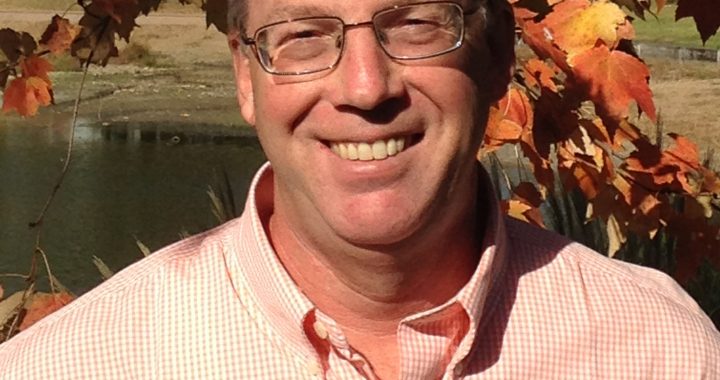What was your role as Director, Environmental Strategy for Agriculture at Monsanto about?
“That role involved research regarding what impact agriculture has on the environment. I was focusing specifically on climate change. For example… What has happened, how it is affecting agriculture, and how agriculture could help mitigate climate change.”
Why would a seed company need somebody to do this?
“Agriculture is the second largest source of emissions on the planet after power generation. Even though GHG-emitting agricultural practices are individually not that significant, they become so simply because agriculture occupies such a wide surface area of our land mass. For example, fertilizers aren’t applied in huge amounts, but they contain compounds such as nitrous oxide, which has 300 times the global-warming potential of carbon dioxide. And methane has 25 times the warming potential.
My team and I were trying to understand the problem and solutions. We worked with a variety of academic and public groups to understand the modelling behind GHG emissions. This included getting information from Gentec on feed efficiency and its potential to mitigate this problem.It was really interesting to discover where emissions come from and which ones we can do something about.”
What attracted you to the role?
“I’ve always been interested in sustainability and modelling (I’m a closet geek!). I wanted to know how we could prepare for climate change and how we could mitigate it.
Farmers are enthusiastic about faming and being part of the solution. They do a great job of feeding the planet—but wouldn’t it be nice if they could help save it, too? The thing is, when they hear talk about climate change and mitigation strategies, they immediately think of implications for their business, such as a heavier tax burden. So if you ask them if they believe in climate change, they might say ‘No,’ not because they’re climate-change deniers but because they’re more afraid of the proposed solutions than of the problem.”
What came out of that work?
“We found that tillage and fertilizers were sources of GHGs that could be mitigated. No-till agriculture and cover crops are great examples of how to reduce emissions and the need for fertilizers, build carbon in the soil and preserve the topsoil at the same time. We had a model that predicted that you could get to carbon-neutral from a cropping standpoint. So if you did it right, you could offset all your emissions from use of fuel and fertilizer by building the carbon back into the soil. Sequestration and storage in the soil are a great counterbalance to activities on the land.”
That’s great! Does the model work everywhere?
“Well, it could be used in different climates but it’s easier in temperate zones. In tropical climates, it’s so much harder to build carbon because it breaks down under lots of rain, heat and sun. Plus, weeds grow faster and herbicides are less available, so more tillage is needed. That said, rainforests do a great job of storing carbon but in the canopy, not necessarily in the soil. In the Northern Hemisphere, we can do a lot more in terms of reducing emissions in agriculture.”
What did you learn from talking to consumers?
“At Monsanto, we were acutely aware of criticisms and what we could have done to right the story. Unfortunately, we can’t turn the clock back, and it’s hard to counter some of the bad press.
There are plenty of lessons we can learn from the past. We know that food is an emotional issue, and when a topic is emotional, scientific arguments don’t hold much sway. We also know that trust is paramount. How do you establish and keep trust with consumers? The number one factor associated with trust is transparency.”
How do you build trust?
“As scientists, we tend to understate the risks and overstate the benefits because we like shiny new technologies. So two things can help clarify the situation: 1) Transparency about risk versus reward and 2) Good story tellers who can effectively speak to a broad audience about the issues. What we don’t want is a situation where consumers want more information, but all they see are images of buildings, machinery and technology. The best story-tellers are farmers and producers because they’re doing the job every day. They are the genuine voice.
Some consumers are critical of agribusiness. They believe the only thing industry is interested in is making money. Of course, in the short term, that’s correct. But industry wants to make money in the long term as well. So agribusiness is constantly evaluating risks and liabilities, but shouldn’t expect to fly under the radar when it comes to new technology. We have to get out there, and talk about what we’re doing. The science can’t be left to speak for itself when emotion is at play.”
What role has the internet played in all this?
“Consumers used to get their information from credible sources like journalists, the news, experts or scientific journals. But now, everybody is an expert and can easily publish information. That doesn’t mean the information is vetted. Activists have found an effective tool in social media, and they tend to use the spaghetti principle (fling a credible-sounding meme against a wall and see if it sticks) to find out if an issue has legs.
An example is the story that circulated claiming GMO crops caused farmers to commit suicide. We thought that was ludicrous, but it stuck because farming in India has long had a problem with suicides that were often tied to bankruptcies. Yes, some farmers had invested in GMO seed, but without the financial safety net of crop insurance like in North American and Europe, they went bankrupt if crops failed. We even found that, often, the purported GMO seeds were counterfeit. It took so much effort to disprove that story, and it still lingers today like an urban myth.”
Stay tuned for Part 2 in next month’s newsletter!




